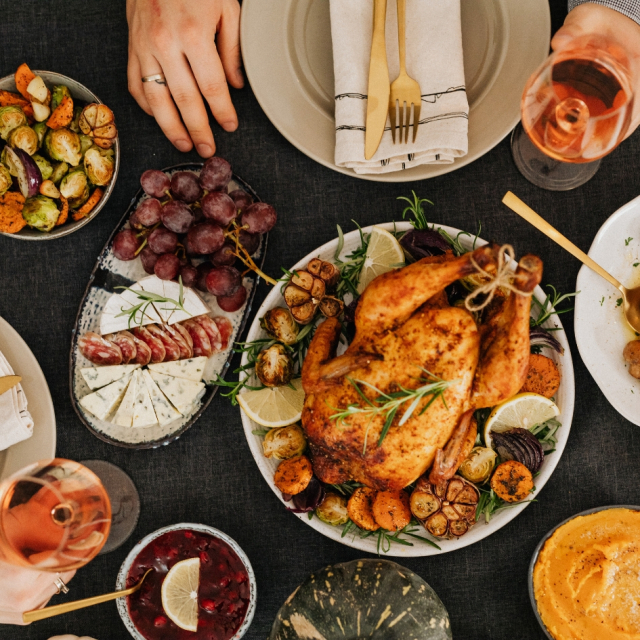Ecuadorian gastronomy is a rich blend of indigenous, African, and Spanish influences that has evolved over time to become a symbol of cultural identity. Each region of the country has emblematic dishes that reflect its history, culture, and biodiversity. In this article, we will explore the four foods that Ecuadorians consume the most, analyzing their ingredients, preparation, and cultural meanings.
1. The Onion Sauce.
Encebollado is considered the signature dish of Ecuadorian cuisine, especially popular in the coastal region. This hot soup, made with fish (usually albacore), yuca, pickled onions and spices, is consumed throughout the year and is famous as a hangover remedy.
- Main ingredients :
Fresh fish, yuca, red onion, tomato, lemon, cilantro and spices such as cumin and oregano. - Preparation :
The fish is cooked with aromatic herbs, then shredded and mixed with a broth prepared with tomato and spices. The cooked yuca is added at the end, along with pickled onion and lemon juice. - Consumption and tradition :
Although it can be enjoyed at any time of day, encebollado is particularly popular as a breakfast or lunch dish. Its versatility makes it suitable for both family gatherings and for sale in small shops and street carts.
According to El Universo , this dish is widely accepted due to its low cost and the perception of being a comforting and nutritious meal.
2. Chicken or Goat Stew.
Seco is another traditional dish widely consumed in Ecuador, and its most popular variants are seco de pollo and seco de chivo. This stew stands out for its intense flavor, thanks to a mix of spices and local fruits such as naranjilla.
- Main ingredients :
Chicken or goat, onion, peppers, garlic, tomato, naranjilla, beer or chicha de jora and spices such as cumin and achiote. - Preparation :
The meat is slowly cooked in a mixture of tomato, onion, garlic and naranjilla juice, which gives it its characteristic acidic flavour. Traditionally, it is accompanied with rice, fried ripe plantain and salad. - Consumption and tradition :
It is a typical dish for family lunches and special events. The Sierra and Coast regions have slight variations in preparation, but seco remains a constant in the Ecuadorian diet.
According to La República , seco is a legacy of colonial cuisine and has been adapted to include local ingredients, becoming a national favorite.
3. Ceviche.
Ceviche is a dish that reflects the richness of Ecuadorian seafood. Although there are several versions of this dish in Latin America, Ecuadorian ceviche is distinguished by its citrus-based juice and the inclusion of toasted corn or chifles as accompaniment.
- Main ingredients :
Fresh seafood (shrimp, fish or mixed), lemon juice, tomato, red onion, cilantro and spices. - Preparation :
The seafood is "cooked" in lemon juice, then mixed with tomato and pickled onion. It is served cold, accompanied by chifles (fried green plantain) or toasted corn. - Consumption and tradition :
Popular in the Costa region, ceviche is ideal for hot days due to its freshness. It is also associated with social gatherings and outdoor events.
An article in Vistazo points out that Ecuadorian ceviche has become international, being recognized for its unique flavor and fresh ingredients.
4. The Hornado.
Hornado is an emblematic dish of the Ecuadorian highlands, especially popular in provinces such as Tungurahua, Cotopaxi and Pichincha. It consists of slowly baked pork, accompanied by mote, potatoes and salad, and is one of the most representative dishes of local festivals and fairs.
- Main ingredients :
Pork, garlic, onion, spices such as cumin and achiote, and garnishes of mote, potatoes and salad. - Preparation :
The pork is marinated in a mixture of garlic, onion and spices, then baked for several hours until the meat is tender and the skin is crispy. - Consumption and tradition :
It is common to find hornado in local markets and fairs. It is also served at celebrations such as weddings and patron saint festivals.
According to Ecuavisa , hornado is more than a dish: it is a symbol of the hospitality and cultural richness of the indigenous communities of the Sierra.
Cultural and Economic Impact of These Foods.
The four foods mentioned above are not only essential to the Ecuadorian diet, but also play an important role in the country's economy and cultural identity.
- Local economy :
- Many of the ingredients used, such as fish, naranjilla and mote, come from local farmers and fishermen, boosting the rural economy.
- Gastronomic tourism :
- Ecuador has gained international recognition as a culinary destination, and these dishes attract tourists interested in experiencing the authenticity of Ecuadorian food.
- Cultural identity :
- The dishes reflect the geographic and cultural diversity of the country, from the coast to the mountains, and are a way of keeping family and community traditions alive.
Ecuadorian gastronomy is a living testament to the country’s diversity and cultural richness. Dishes such as encebollado, seco, ceviche, and hornado are not only delicious, but are also deeply rooted in Ecuadorian history and traditions. Each of these dishes tells a story, whether it be colonial influences, local adaptations, or community celebrations. What’s more, their impact goes beyond the table: they contribute to the local economy, promote tourism, and strengthen social ties.
By exploring these foods, we not only get a taste of Ecuador's culinary richness, but we also gain a better understanding of its identity as a nation. For those visiting the country or looking to connect with its cultural heritage, sampling these dishes is a must-do experience.
Sources consulted :
